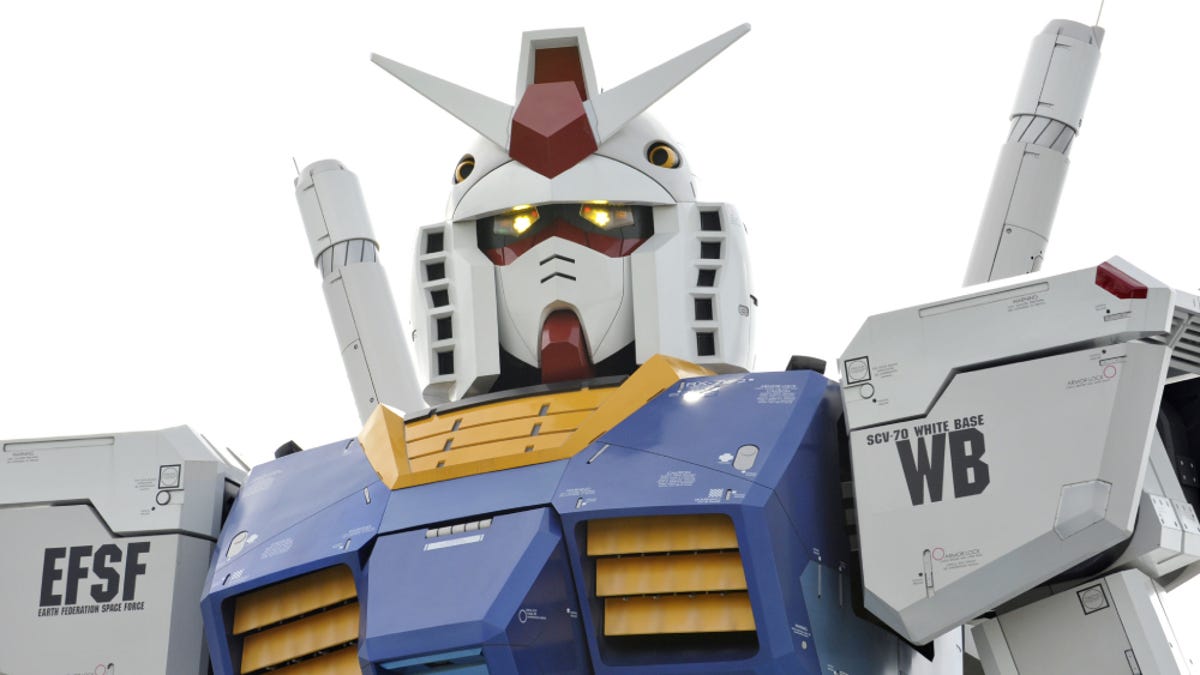With Gundam, Yoshiyuki Tomino created one of the greatest space operas ever. The anime has inspired generations to look towards space. However, don’t count him as someone cheering on modern-day space exploration.
This summer, Virgin billionaire Richard Branson and Amazon billionaire Jeff Bezos launched themselves in space. Next year, fellow billionaire Elon Musk, who has his own rocket company SpaceX, will follow suit. Among the aims of these private space programs are space tourism, which as our colleagues at Gizmodo have pointed out is a waste, and even colonization.
In a wide-ranging interview with Japanese magazine Weekly Playboy, Tomino talked about this, among other topics, including how he had developed spinal canal stenosis, a condition in which the spaces within the spine narrow. For some people, they might have no symptoms, but for Tomino, who’s 79, getting around has become more difficult. “I probably only have three years left that I can work at the studio.” He did seem upbeat throughout the interview and, as one would expect about space, opinionated.
With regard to exploration and colonization of the cosmos, Tomino mentioned that “politicians, financiers, and space explorers are not thinking about how harsh things will be in the near future.” Tomino pointed out that even the Apollo program enabled humans to just touch down on the Moon.
Continuing, Tomino said, “They’re not thinking about things like, ‘Isn’t it stupid to be saying what a territory [in space] is? To the fundamental point, what even are people going to do on the colony? Humans need air and water to live in space, right? How long are they going to live in space?’”
(Musk has said some will never return to Earth from Mars and that the planet’s harsh conditions might cause death.)
Yet, it’s those bigger, very real questions that don’t seem to be addressed by modern space fanciers, whose attitudes seem to be that they’ll figure things out. There are undeniable concerns. As Briony Horgan, assistant professor of planetary science at Purdue University, pointed out to Gizmodo, radiation exposure is one logistical hindrance for colonization on Mars. “As soon as you go outside to do anything, you’re in trouble,” said Horgan, adding that this is one issue “that a lot of folks, including those at SpaceX, aren’t thinking about too clearly.”
G/O Media may get a commission
It’s not only radiation on Mars that’s a worry. Tomino also pointed out how crude the idea of launching rockets was and explained that rockets are an impediment because the toxic substances they emit can impact the areas around the flight paths, as seen with the Baikonur Cosmodrome in Russia. According ton one Russian scientist, fuel burn off caused large numbers of birds and other wildlife to die. (Bezos, on the other hand, believes the reason why it’s necessary to go to space was to save the Earth; however, unless there were fundamental changes in rocket propulsion, the planet would be destroyed in the process.)
“You’re saying due to the recent, non-governmental rocket launches, the rocket fuel is polluting the Earth,” said Weekly Playboy, clarifying.
“Yes,” said Tomino. “Just think about it, please. Today’s rockets couldn’t transport 1,000 or more people to the Moon, right?” This, explained Tomino, is why in the G-Reco anime, features an orbital elevator called Capital Tower. Back in 2015, Tomino previously said that “moving things of that scale [on an orbital elevator] using artificial power would be absolutely impossible with the green energy that we have now.” At the time, he did say it was necessary to put more effort into research, including space engineering. Even though something like this isn’t possible, Tomino, at least, is thinking through the large impacts of space travel.
When Tomino created Gundam, he was inspired by American physicist Gerard O’Neill, who championed space exploration. O’Neil was not alone. Louis Friedman, co-founder of the Planetary Society and author of Human Spaceflight: From Mars to the Stars, told Gizmodo that there was optimism after the Moon landings about the possibility of colonies in space. However, he continued, no human spaceflight program has established the necessary groundwork for Mars colonies. Bases might be possible, but colonies seem unlikely for now.
Yet, in Gundam, humans are exploring the universe and colonizing. But we don’t live in that world. I know that, you know that, and Tomino definitely does, too. His skepticism is not new. In the past, Tomino has been clear that Gundam is not reality. “The world of Gundam is unrealistic,” he said in a 2010 talk (as translated by Zimmerit). When probed further about this, “It’s just an anime.” That it most certainly is.
And on the world in which we do live? Immediate, real-life problems always seem pushed aside and kicked down the road.
Kotaku
Source link
Related Post:
- Gundam Evolution Gets Lots of Screenshots Showing ∀ Gundam, Barbatos, Guntank, & Dom Trooper
- Nintendo Minute – “Pokemon Unite Creator vs. Creator Battle – Talonflame Scores HOW many points?!”
- Kerbal Space Program creator looks back on leaving it behind: ‘The hardest thing I’ve had to do in my whole life’
- DayZ creator Dean Hall delays space survival game Icarus to November
- Original Dead Space co-creator says he’s ‘excited’ by the remake
- Mobile Suit Gundam movies are a perfect Netflix watch for anime fans, old or new
- Tokyo 2024 Olympics Commentator tries his best to say ‘Gundam’
- The BBC’s Twitter Account Thought Gundam Was A Transformer
- Bandai Is Now Recycling Gundam Model Plastic Waste In Japan
- Manga Projects Underway For Gundam Ace 20th Anniversary
